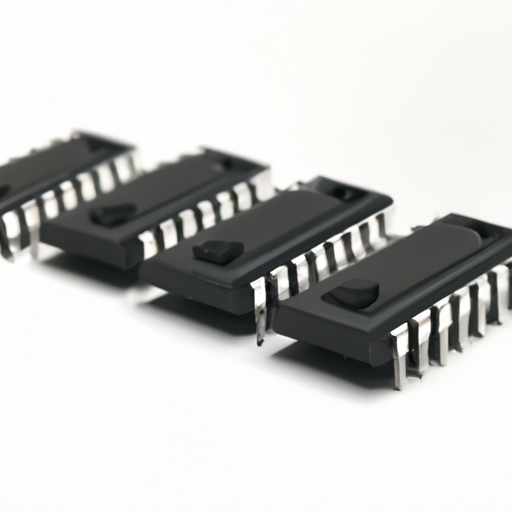Shift Registers: Core Functional Technology and Application Development Cases
Shift registers are fundamental components in digital electronics, serving as memory circuits that facilitate the storage, transfer, and manipulation of data. Below, we delve into their core functionalities, types, and various application development cases.
Core Functional Technology of Shift Registers
1. Data Storage: Shift registers consist of a series of flip-flops, each capable of storing one bit of data. The total number of flip-flops determines the register's capacity, allowing it to hold multiple bits simultaneously.
2. Data Shifting: By applying clock pulses, shift registers can shift data left or right. This shifting mechanism allows for the movement of bits within the register, enabling various data manipulation techniques.
3. Serial to Parallel Conversion: Shift registers can take serial data input (one bit at a time) and convert it into parallel output (multiple bits at once). This feature is particularly useful for interfacing with devices that require parallel data formats.
4. Parallel to Serial Conversion: Conversely, shift registers can convert parallel data into serial data, which is essential for communication protocols that transmit data over a single line.
5. Data Manipulation: Shift registers can perform operations such as data rotation (where bits are shifted and wrapped around) and simple arithmetic operations, making them versatile in data processing tasks.
Types of Shift Registers
1. Serial-In Serial-Out (SISO): Data is input and output serially, making it suitable for simple data transfer applications.
2. Serial-In Parallel-Out (SIPO): Data is input serially and output in parallel, ideal for applications requiring parallel data processing.
3. Parallel-In Serial-Out (PISO): Data is input in parallel and output serially, useful for converting multiple data lines into a single data stream.
4. Parallel-In Parallel-Out (PIPO): Data is both input and output in parallel, allowing for high-speed data transfer.
Application Development Cases
1. Microcontroller Interfacing: Shift registers, such as the 74HC595, are commonly used to expand the number of I/O pins on microcontrollers. This allows for controlling multiple devices (e.g., LEDs, motors) with fewer pins, simplifying circuit design.
2. Data Communication: In communication systems, shift registers are integral to serializing data for transmission. For example, in SPI (Serial Peripheral Interface) communication, they facilitate the transfer of data between microcontrollers and peripheral devices.
3. Digital Signal Processing: Shift registers are employed in digital filters and other signal processing applications to store and manipulate data streams, enhancing the performance of audio and video processing systems.
4. Memory Storage: In applications like digital signal processors (DSPs), shift registers can serve as temporary storage for data, buffering information before further processing.
5. LED Matrix Displays: Shift registers are widely used to control LED matrices, enabling the display of complex patterns and images while minimizing wiring complexity.
6. Data Acquisition Systems: In systems that require sampling multiple analog signals, shift registers can convert sampled data into a digital format, facilitating efficient data processing and analysis.
7. Shift Register-Based Counters: Shift registers can be configured to create counters, which are essential in timing applications and frequency division.
8. State Machines: Shift registers can be used to implement finite state machines, allowing for complex control logic in digital systems.
Conclusion
Shift registers are versatile and essential components in digital electronics, enabling efficient data handling and manipulation. Their ability to convert between serial and parallel data formats makes them invaluable in various applications, from microcontroller interfacing to communication systems. Understanding their core functionalities and applications can significantly enhance the design and development of electronic systems, paving the way for innovative solutions in technology.






